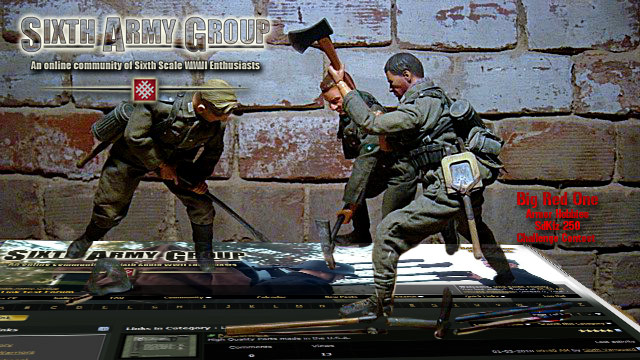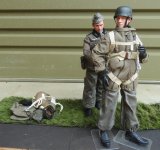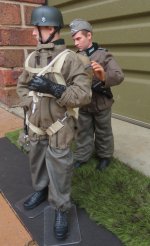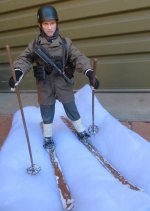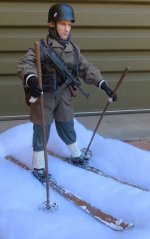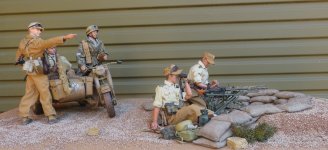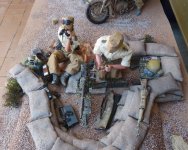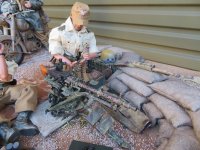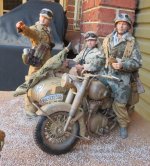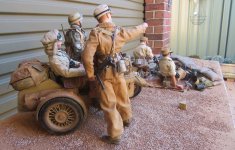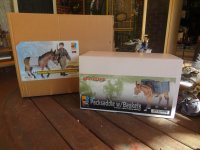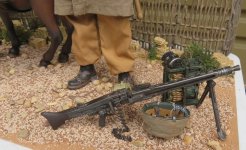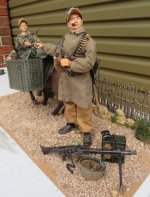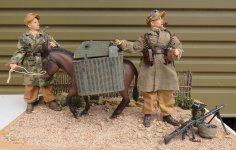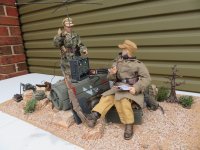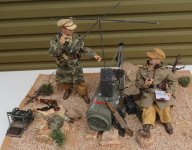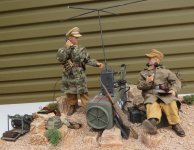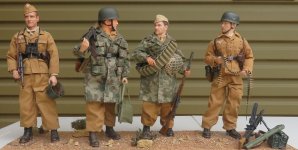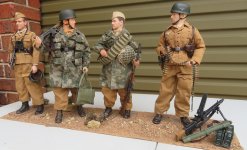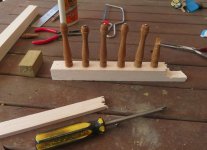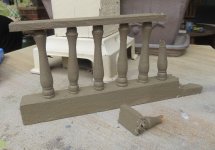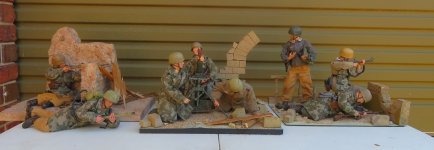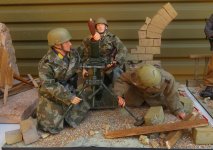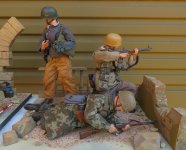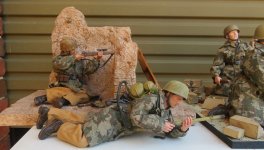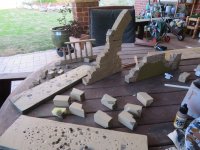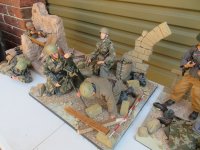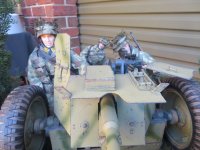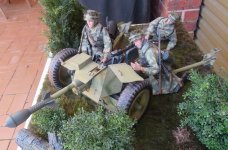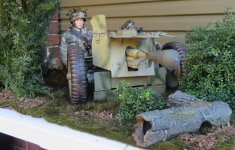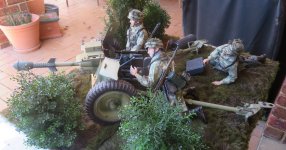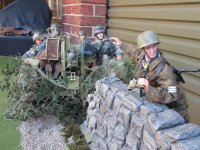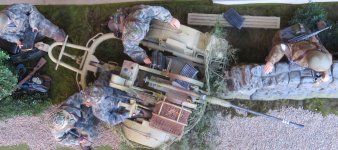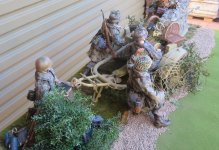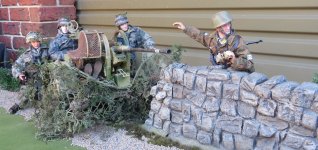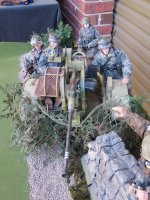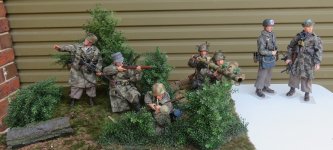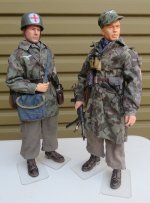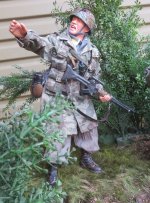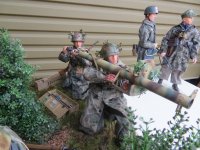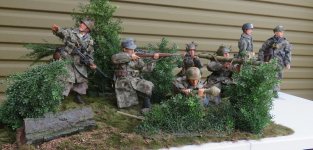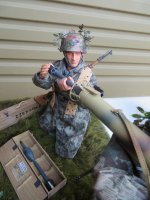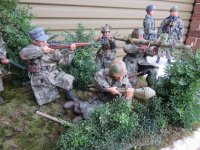By the time of the great Western Allied crusade to re-enter Europe through the Calvados Coast (specifically Normandy), the Fallschirmjager had grown substantially despite their use in more a ground role than that of airborne and surprisingly, though a part of the Luftwaffe, were some of the best ground troops to be employed deep along the Normandy coast (including the Contentin Peninsula) as a strategic reserve and specifically trained in the most part to counter the likelihood of airborne insertion by the Allies.
II Parachute Corps (consisting of 2nd, 3rd, 5th and 6th Parachute Divisions, and 6th Parachute Regiment) played a pivotal role in Normandy between D-Day and the end of August 1944 and in order to cover it sufficiently by way of 1/6th have split the figure narrative into three dioramas - Carantan, the Defence of Brest and one covering the fighting in-general in the Bocage (more so on the latter to cover uniforms and equipment).
Firstly Carantan and for those fans of WW2 airborne then the clash between 6th Parachute Regiment and the U.S. 101st A/B Div will be familiar story. The German defence stubbornly blocking the link-up between the two U.S. beachheads as well as stall any chance for U.S. First Army to cut across the Contentin.
The battle to evict the Germans from St-Come-du-Mont preceded Carantan (the 6th FJR Regiment falling back over the Couve River into Carantan after munitions shortages and fear of being encircled left them little option. The German paras were actually ill-prepared to hold onto the town for any significant period despite Rommel's views that the town must be held for the reasons stated; however, Major von Der Heyte - the Regimental commander - carried out his orders and prepared the town for defence despite on-going ammunition shortfalls.
For the scene, illustrating the defence, I chose for inspiration a scene from the 'Carantan' episode of 'Band of Brothers' where a PAK 36 fires its muzzle-loaded Stielgranate 41 hollow-charge anti-armour grenade. By repainting and detailing my CHE variant of the gun a couple of years back, one of the problems with the model grenade was that it fitted entirely to the front of the barrel, held in-place by a protrusion at the back of it. I had a mate 3d print a more accurate round where the tail assembly of the grenade fits over the barrel sleeve - not to the front of it.
Here the crew wait in ambush noting that though the round was very effective it was only so at a maximum range of 800m and this was part of the reason why the now-obsolete PAK 36 was retained by the FJR - not only because of its air-drop capability but it was light enough to be man-handled around the battlefield and particularly the Normandy Bocage with relative ease by its crew, the design of the grenade done so in order to keep the gun in-service given the large number made. I also had the rounds transport container and a spare round 3d printed for added detail. Enjoy, Steve
